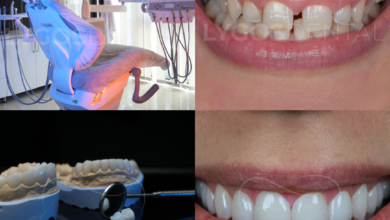A Comprehensive Guide to Intravenous Therapy Tools

Introduction to Intravenous Administration
Intravenous therapy is an essential component of modern healthcare, allowing medical professionals to deliver fluids, medications, and nutrients directly into a patient’s bloodstream. This method provides rapid therapeutic effects, precise dosing, and effective management of critical conditions. Hospitals, clinics, and home care settings depend on properly designed systems to ensure patient safety and treatment accuracy.
Importance of High-Quality Equipment
Using high-quality equipment is crucial in intravenous therapy. Poorly constructed devices can lead to dosing errors, contamination, or patient discomfort. Reliable systems enhance safety, maintain consistent fluid flow, and improve the efficiency of healthcare delivery. Medical professionals rely on these tools to achieve optimal treatment outcomes and reduce the risk of complications.
See also: The Modern Shift Toward Health-Oriented Nutrition
Key Components of an infusion set
An infusion set consists of multiple components that work together to ensure safe and accurate fluid delivery. Understanding the function of each infusion set part helps healthcare providers administer therapy efficiently and with minimal risk.
Drip Chamber
The drip chamber allows healthcare staff to visually monitor the fluid flow. It also prevents air from entering the tubing, which reduces the risk of air embolism. Proper use of the drip chamber ensures controlled and steady delivery of fluids over time.
Flow Regulator or Roller Clamp
The flow regulator, often in the form of a roller clamp, controls the speed at which fluids are administered. Adjusting this component helps ensure that patients receive the correct dose over the intended time period.
Tubing
Tubing connects the fluid source to the patient’s intravenous access point. It is available in different lengths and diameters to suit specific clinical needs. High-quality tubing minimizes the risk of kinks, blockages, and contamination while maintaining a smooth flow of fluids.
Needle or Catheter
The needle or catheter provides direct access to the patient’s vein. Catheters are typically preferred for long-term therapy because they reduce tissue trauma and enhance patient comfort. Proper insertion, maintenance, and monitoring are essential to prevent infection and ensure uninterrupted therapy.
Luer Lock Connector
Luer lock connectors secure the tubing to syringes or other devices, forming a leak-proof connection. This ensures accurate fluid delivery while maintaining sterility during administration.
Injection Port
Injection ports allow additional medications to be administered without disconnecting the primary setup. This feature minimizes contamination risks and enables multiple therapies to be delivered efficiently.
Applications of an infusion set
Understanding how an infusion set functions is vital for effective patient care. These systems are used in various clinical scenarios, each requiring careful monitoring and accurate delivery of fluids and medications.
Fluid Replacement
Patients suffering from dehydration, blood loss, or electrolyte imbalance often require fluid replacement. Proper management of all infusion set components ensures that fluids are delivered safely and at the correct rate, supporting recovery and stabilizing the patient.
Medication Administration
Intravenous therapy allows direct medication delivery into the bloodstream, providing rapid effects. This is especially critical in emergency care, intensive care units, and situations where oral administration is not feasible. Correct assembly and monitoring of the infusion set ensures precise dosing and patient safety.
Nutritional Support
Patients unable to take food orally can receive essential nutrients intravenously. Infusion sets allow controlled administration of vitamins, minerals, and other nutrients, promoting overall health and recovery.
Blood Transfusion
Blood transfusions require careful monitoring and accurate control. Each component of the infusion set contributes to safe administration, maintains sterility, and helps prevent complications such as air embolisms or contamination.
Selecting the Appropriate System
Choosing the right infusion set depends on patient age, treatment type, fluid volume, and clinical environment. Pediatric patients may need smaller catheters and low-volume tubing, while adults receiving rapid infusion may require larger-bore systems. Additional considerations include compatibility with other medical devices, ease of handling, and adherence to sterility standards.
Best Practices for Usage
Proper handling and maintenance of an infusion set are critical for effective therapy. Healthcare providers should follow protocols for setup, monitoring, and flow rate adjustments. Regular inspections of all components help identify leaks, blockages, or disconnections, ensuring continuous therapy and minimizing patient risk.
Patient Comfort
Comfort is an essential aspect of intravenous therapy. Flexible tubing, smooth connectors, and ergonomic designs reduce discomfort during treatment. Injection ports allow medication administration without repeated needle sticks, enhancing patient experience. Minimizing pain and anxiety is particularly important for patients requiring long-term therapy.
Safety and Environmental Considerations
While disposable infusion set components reduce the risk of contamination, they also contribute to medical waste. Many healthcare facilities are adopting environmentally responsible materials and recycling programs. Proper disposal and careful handling maintain safety standards while reducing environmental impact.
Technological Innovations
Recent innovations in infusion systems focus on safety, efficiency, and patient experience. Preassembled kits, integrated flow regulators, and smart connectors reduce human error and streamline setup. These advancements simplify procedures, improve sterility, and enhance overall patient care.
Conclusion
Intravenous therapy is a fundamental practice in modern healthcare, allowing rapid and accurate delivery of fluids, medications, and nutrients. Understanding the components of an infusion set ensures that healthcare providers can assemble systems correctly, monitor therapy effectively, and troubleshoot problems efficiently. From fluid replacement and medication administration to nutritional support and blood transfusions, each element plays a crucial role in patient care. Proper selection, handling, and awareness of modern innovations improve treatment outcomes and maintain high standards of healthcare practice.





